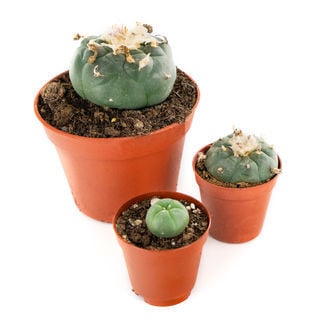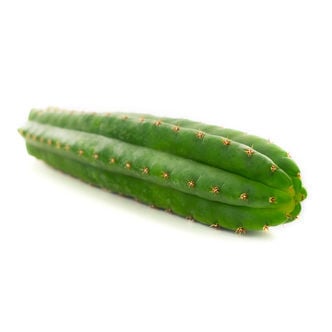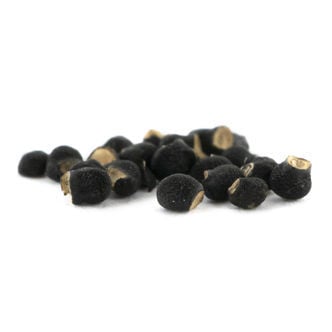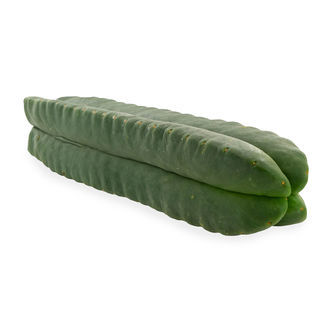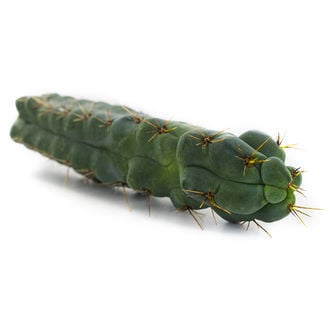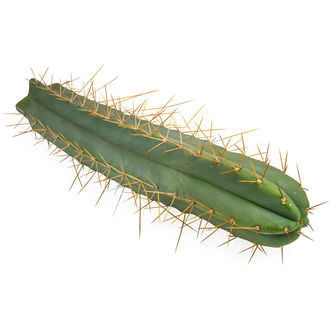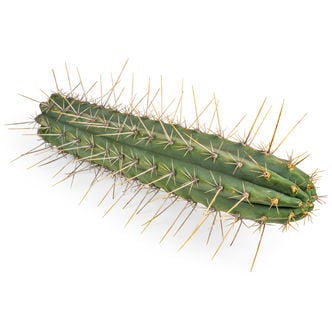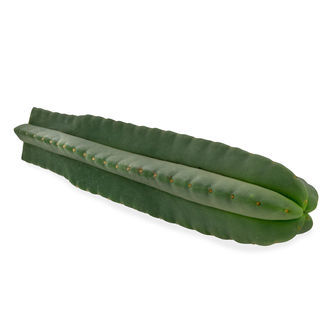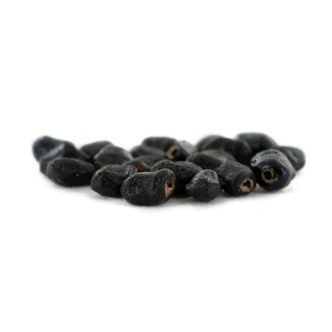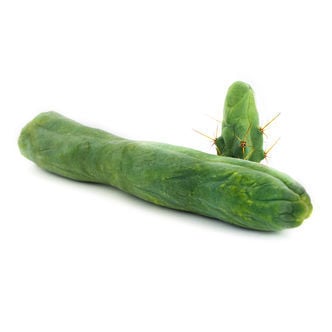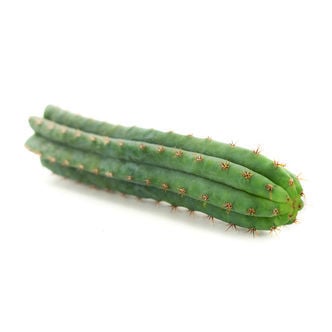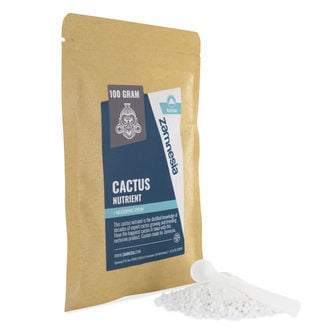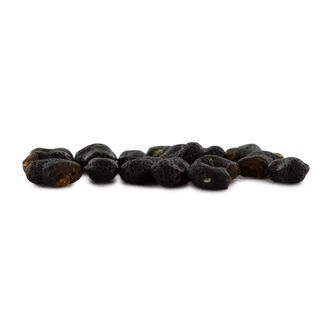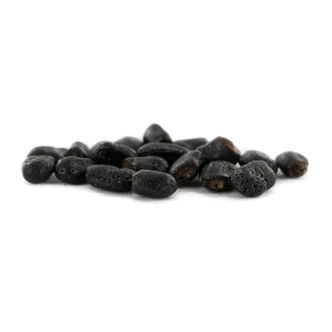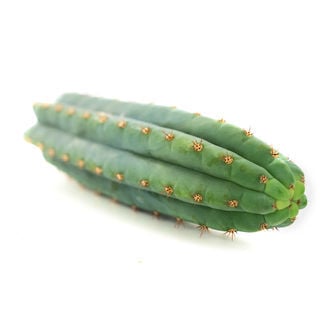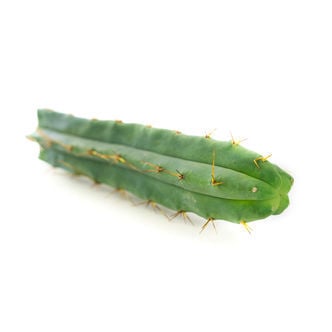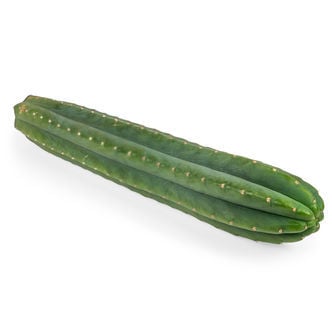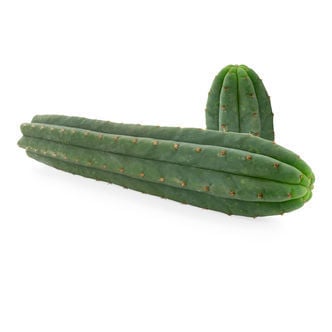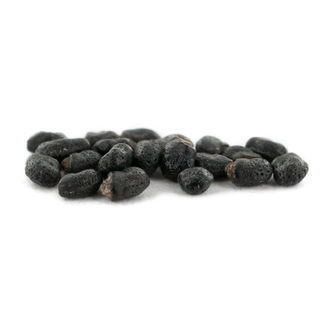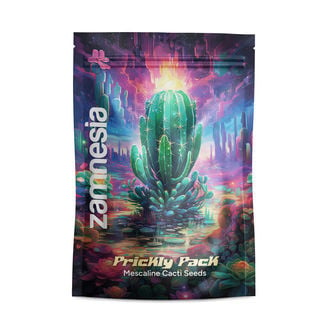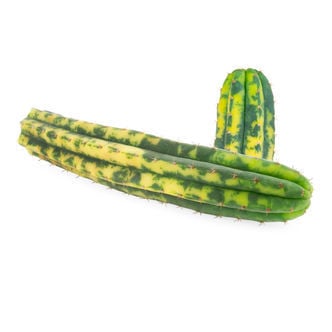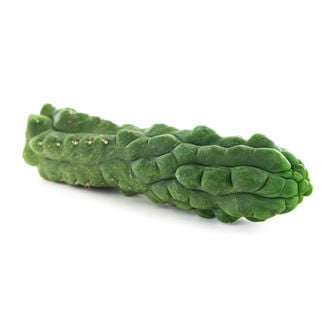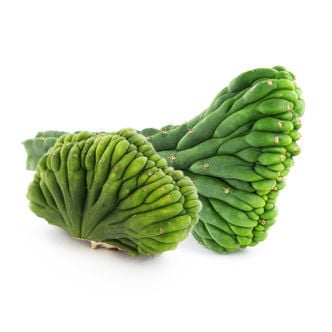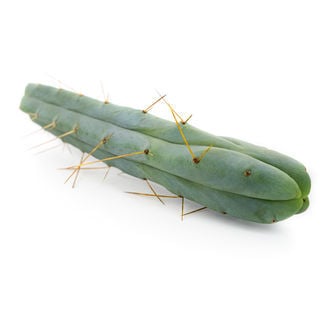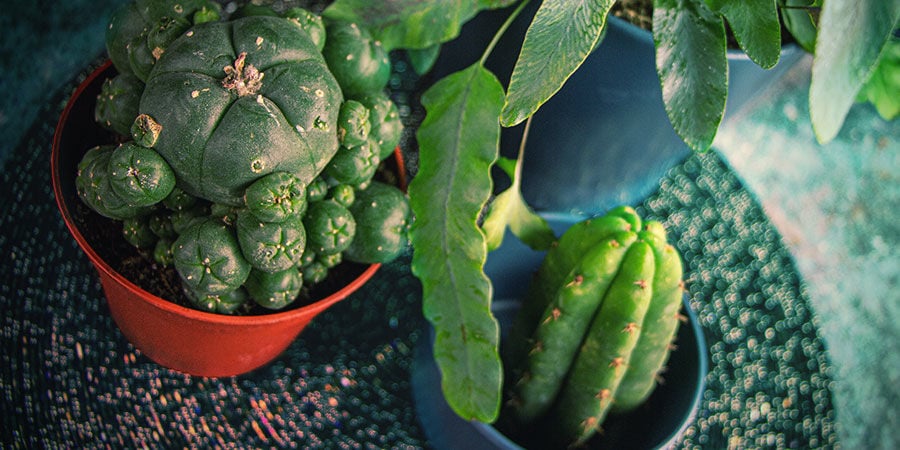Mescaline Cacti
There are 28 products.Mescaline cacti play a very important role in Latin American shamanic culture. Mescaline is a psychoactive alkaloid that induces intense visual effects and a strongly altered state of consciousness. Peyote (Lophophora williamsii) from Mexico is a well-known mescaline cactus. There are other, lesser-known yet equally celebrated species of mescaline cacti, such as San Pedro (Echinopsis pachanoi) and Peruvian torch (Echinopsis peruviana).
We offer a compelling selection of mescaline cacti that are suitable for cultivation at home. The cuttings can simply be placed in soil and the cactus will shoot roots and grow like nothing ever happened.
Mescaline Cacti - Click here for more infoPeyote (Lophophora williamsii)
Peyote, considered a living god, El Mescalito has a long history among the natives of northern Mexico and Southwestern USA – at least 5700 years, say archeologists. Then it was demonized and driven underground by the Spanish conquerors in the 16th century. But thanks to the wonders of modern cultivation, you can have one of these sacred Lophophora williamsii in your own home.
San Pedro (Echinopsis pachanoi)
A.k.a. Trichocereus pachanoi. The San Pedro cactus (Echinopsis pachanoi) originates from Peru and Ecuador. This cactus contains the psychoactive compound mescaline and plays a very important part in Latin American shamanic culture. We sell cuttings in different sizes that will effortlessly resume their growth once they are put back in the ground.
Peyote (Lophophora williamsii) 20 seeds
With our freshly harvested high quality Lophophora williamsii (Peyote) seeds you can now grow your own Peyote cacti at home. As compared to fully grown Peyote cacti plants, cultivating your own Peyote can be more economic because you can grow them at relatively low cost. Plus, being able to watch your Peyote seeds grow to full-grown flowering plants can make for a fascinating hobby all on its own!
Super Pedro - 4 Ribs (Echinopsis scopulicola)
Super Pedro cacti have been used for over 2,000 years in the Andes. This 4-ribbed variety of Super Pedro is extremely rare and sourced from unique, healthy aged specimens.
Echinopsis ''zamnesiana''
A happy accident or a gift from the god of psychedelics? While no one can say for sure, what we can say is Echinopsis ''zamnesiana'' certainly looks the part. You may notice that some will feature lumps, varied shapes, and all kinds of physical differences.
Bolivian Torch XL (Echinopsis bridgesii)
The Bolivian torch (Echinopsis bridgesii) is an ancient mescaline cactus native to the Andes mountain range and the Bolivian desert. For centuries, it's played a key role in the shamanic practices and development of traditional Bolivian society. Now, with these carefully sourced live cuttings, you can grow this ancient cactus at home with ease.
Peruvian Torch XL (Echinopsis peruviana)
The Peruvian torch (Echinopsis peruviana) is a famed mescaline cactus native to the Peruvian Andes. Though sometimes confused with the more well-known San Pedro, the Peruvian torch is a separate species with unique growth traits and properties. Add this unique mescaline cactus to your collection today with these XL live cuttings from Zamnesia.
Super Pedro (Echinopsis scopulicola)
Echinopsis scopulicola can grow up to a huge 4 metres and has beautiful flowers that only open at night. Much like the famous peyote, it contains the psychotropic compound mescaline. Easy and rewarding to grow, Echinopsis scopulicola is a great addition to a psychedelic garden.
Echinopsis macrogona (Trichocereus macrogonus) 20 seeds
Echinopsis macrogona (AKA Trichocereus macrogonus) is a sacred cactus. Like the Peruvian torch cactus, Echinopsis macrogona contains mescaline which gives it powerful psychedelic and hallucinogenic properties. With the Echinopsis macrogona seeds available at Zamnesia you can now grow this sacred cactus at home!
Bolivian Torch 'Monstrose' (Penis Plant)
The "monstrose" version of the Bolivian Torch (Echinopsis lageniformis) is a special cactus, also called the "Penis Plant". "Monstrose" signifies that this is a mutated form of the original cactus, in this instance the Bolivian Torch. A mutant cactus grows into an abnormal shape and therefore can take on a divergent form compared to cacti of the same species.
Peruvian Torch (Echinopsis peruviana)
Previously known as Trichocereus peruvianus. This cactus thrives at an altitude of 2000-3000 meters in it's natural habitat, the Andes in Peru and Ecuador. The Peruvian Torch grows at a high rate, contains the psychoactive compound mescaline and has green skin with a light blue glow. We sell different sizes - small, medium and large - all of which are perfect for home cultivation.
Cactus Nutrient
This cactus nutrient is the distilled knowledge of decades of expert cactus growing and breeding. Have the happiest cactus in town with this exclusive product. Custom made for Zamnesia.
Peruvian Torch (Echinopsis peruviana) 20 seeds
Echinopsis peruviana, better known as the Peruvian Torch cactus is another of the hallucinogenic cacti that is native to South America. The Peruvian Torch contains the psychoactive alkaloid mescaline which makes for powerful, altered states of consciousness. With our fresh Peruvian Torch (Trichocereus peruvianus) seeds you can now grow this sacred cactus easily at home.
Bolivian Torch (Echinopsis lageniformis) 20 seeds
The Bolivian Torch (Echinopsis lageniformis) is one of the psychedelic cacti of South America that plays an important role in Shamanic rituals. It is similar in appearance to the San Pedro cactus but with fewer and wider ribs. Like the San Pedro cactus, the Bolivian Torch contains a number of psychoactive alkaloids including the powerful psychedelic compound Mescaline.
Echinopsis macrogona (AKA Trichocereus macrogonus)
Echinopsis macrogona (trichocereus macrogonus) is a sacred cactus similar to the Peruvian Torch. This easy-to-grow cactus contains the alkaloid mescaline.
Bolivian Torch (Echinopsis lageniformis)
Formerly known as Trichocereus bridgesii. This cactus is naturally found in the Bolivian mountains. The natives of Bolivia call this cactus Achuma or Wachuma. We have several sizes of cuttings of the Bolivian Torch in stock.
San Pedro XL (Echinopsis pachanoi)
San Pedro (Echinopsis pachanoi) is an ancient cactus native to the high plains of the Andes. Though its habitat stretches right down to northern Chile and Argentina, San Pedro is most commonly found throughout Ecuador and Peru. Now, you can grow real San Pedro at home with these healthy live XL cactus cuttings.
7-Ribbed San Pedro (Echinopsis pachanoi)
San Pedro is an ancient mescaline cactus from the Andes, and 7-ribbed varieties are particularly sought after for their rarity and enhanced strength. Get your live cutting of authentic 7-ribbed San Pedro cactus here, and grow this South American rarity at home.
San Pedro (Echinopsis pachanoi) 20 seeds
Echinopsis pachanoi, the original San Pedro cactus is one of the sacred cacti of South America. For centuries, this cactus has played an important role in Shamanic culture. The cactus is a native to Bolivia and contains psychoactive compounds, the most important one Mescaline. With our fresh Echinopsis pachanoi (San Pedro) seeds you can now easily grow your own San Pedro cacti at home!
Prickly Pack - Mescaline Cacti Seeds
This variety pack of cactus seeds contains everything you need to start cultivating your own mescaline cacti at home! There are numerous species of mescaline-containing cacti, and each one has a slightly different combination of alkaloids, giving each distinct effects. With this pack, you have a range of mescaline cactus seeds to experiment with.
San Pedro Variegated (Echinopsis pachanoi variegata) Buenavista
Do you love unique cactus varieties? Then don't miss the chance to add a cut of Variegated San Pedro to your garden. You won't find this exceptional variety of San Pedro in the South American highlands, making it a must-have for cactus collectors, boasting unique variegations and discolourations. Get yours from Zamnesia now!
San Pedro (Echinopsis pachanoi) 'Monstrose'
Echinopsis pachanoi var. Monstrose is a rare mutant variety of the San Pedro Cactus. Each one is growing in different and unpredictable patterns so that every cactus is entirely unique. This interesting variety of the Echinopsis pachanoi makes a fantastic addition to the collection of every cactus aficionado!
San Pedro Crested (Echinopsis pachanoi cristata)
Another Zamnesia first: The Crested San Pedro (Echinopsis pachanoi cristata)! This unique variation of the San Pedro cactus doesn’t just have one growth-point like the ordinary San Pedro but many. Each of these grow-points can grow at their own pace which makes the Crested San Pedro develop into very cool shapes.
Cactus of the Four Winds (Echinopsis lageniformis forma quadricostata)
The Cactus of the Four Winds (Echinopsis lageniformis forma quadricostata), Bolivian torch, is an extremely rare four-ribbed cactus that can be found in the mountains of Bolivia. Considered as sacred by the natives of Bolivia who call it Achuma or Wachuma, this cactus is said to have even more powerful properties than the San Pedro or the Peruvian torch. We have several sizes of cuttings in stock.
Information About Mescaline Cacti
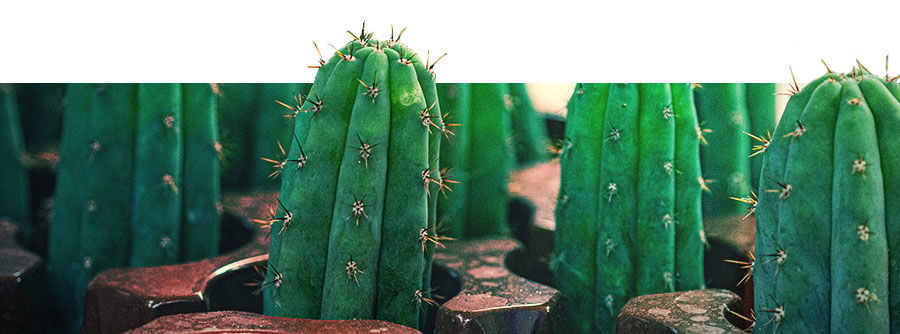
Potent psychedelic compounds occur all throughout nature, from psilocybin-containing mushrooms to DMT-producing toads. We don’t know why they are there. Some claim that these mind-altering substances help to deter would-be predators. Others state that they were put there by a higher power to enable us to experience the divine. Mescaline is one such substance. The psychedelic alkaloid occurs in several species of cactus, and it's been used for thousands of years to induce altered states of consciousness. Join us as we explore the history of these life forms, their effects, and how to grow and consume them.
WHAT ARE MESCALINE CACTI?
Mescaline cacti grow in the Andes Mountains, Mexico, and the southwest United States, where they’ve been used ceremonially for almost 6,000 years. The psychoactive phenethylamine alkaloid mescaline underpins the psychedelic effects.
Academics believe the Native Americans of Texas and New Mexico were the first groups to use mescaline cacti for these purposes—evidenced by effigies discovered in the Shumla Caves of Texas. The Huichol people of Mexico and the Aztecs also used species of mescaline cactus for spiritual and ceremonial purposes.
The Spanish were the first people of the Old World to encounter these plant species. They wrote accounts of witnessing Mexican tribespeople consume preparations before engaging in night-long dances and trances.
Thousands of years after humans started using mescaline cacti for their hallucinogenic properties, Western scientists began unlocking their secrets. It was the German pharmacologist Arthur Heffter who first isolated and identified mescaline in 1897. The Austrian chemist Ernst Spath then synthesised the chemical for the first time just over two decades later.
Mescaline penetrated mainstream Western culture during the 1950s. Author and philosopher Aldous Huxley helped to drive mescaline into the collective psyche through his penning of Doors of Perception—a book detailing his experiences with the psychedelic. Entheogen enthusiast and psychiatrist Humphry Osmond and famed psychedelic chemist Alexander Shulgin helped the molecule gain further traction.
DIFFERENT SPECIES OF MESCALINE CACTI
Several different cactus species produce the mescaline molecule. Some of them are tiny and take an extremely long time to grow, others are towering giants that ascend with haste.
Peyote is perhaps the most famous of the mescaline cacti. The quintessential cactus grows in its native range from southwestern Texas to Mexico. Peyote is one of the most potent species of hallucinogenic cacti and contains 3–6% of the molecule when dried. Known by the scientific name Lophophora williamsii, the spineless cactus is extremely slow-growing. It can take up to three years to develop from a seed into a mature specimen. Even then, peyote rarely exceeds a height of 7cm and a diameter of 12cm. The cactus takes on the shape of a bulb-like “button” and occasionally blooms a single pink-white flower. Sadly, their slow rate of growth—along with overharvesting—has resulted in the cactus’ vulnerable conservation status.
Lophophora decipiens is a separate member of the peyote family. This faster-growing version of peyote looks almost exactly the same and reaches a similar size. It’s native to the Mexican state of Coahuila and proves very difficult to find in the wild.
San Pedro (Echinopsis pachanoi) has been used traditionally within the Andes region for at least 2,000 years. It thrives at altitudes of up to 3,000m in the mountain ranges of Ecuador, Peru, Argentina, Bolivia, and Chile. The cactus grows much taller than the likes of peyote and takes on a columnar structure. It’s capable of growing an additional 40cm annually and tops out at 4–6m. San Pedro produces an abundance of yellow-brown spikes and blooms brilliant white flowers. The dried cactus contains approximately 2.4% mescaline.
Bolivian torch (Echinopsis lageniformis) is a species of mescaline cactus from the high deserts of Bolivia. The columnar species grows fast and reaches heights of 2–5m. It features eight ribs, each lined with brown spikes. Bolivian torch also has a rich history and is known as “wachuma” among indigenous people. It sits on the subtle end of the spectrum, containing only 0.56% mescaline when dried.
Echinopsis zamnesiana is Zamnesia's own breed of the world-renowned Echinopsis genus. While, at first glance, it may share a common look with other types of cacti, it has some subtle nuances that set it apart.
Standing head and shoulders above other mescaline cacti, this tall-growing, potent powerhouse is steeped in a rich history. With use dating back as far as 2,000 years ago, ancient shamans were said to utilise the Echinopsis cactus in rituals as a means to purge evil spirits and open the mind to divine ones. However, it has modern applications too. As a rich source of the psychoactive alkaloid mescaline, Echinopsis zamnesiana takes users on an intense introspective journey.
THE EFFECTS OF MESCALINE CACTI

Mescaline falls into the phenethylamine category of psychoactive substances, alongside the likes of MDMA. This classification separates mescaline from other natural psychedelics—psilocybin and DMT—that belong to the tryptamine class.
Following consumption, mescaline reaches the brain and begins latching onto serotonin receptor sites in the brain. The molecule has a particular affinity for 1A, 2A, 2B, and 2C receptors. Mescaline also interacts with dopamine receptors.
Mescaline is relatively weak compared to other psychedelics. It’s 4,000 times less potent than LSD, and 30 times less potent than psilocybin. Regardless, a high enough dose can still induce a profound altered state of consciousness. A full dose of 200–400mg is swiftly absorbed by the gastrointestinal tract, and effects begin to take hold around 30 minutes after ingestion. The peak of the experience occurs around two hours later, and effects can last up to eight hours.
Tripping on mescaline is a subjective psychedelic experience that will be slightly different between individuals. Common reports include seeing spirals, patterns, architecture, and animals. Synaesthesia (seeing sounds and hearing colours) and feelings of euphoria and interconnectedness are also common experiences.
This is how Huxley described the distorted sense of reality he experienced under the influence of mescaline: “Place and distance cease to be of much interest. The mind does its perceiving in terms of intensity of existence, profundity of significance, relationships within a pattern”.
HOW TO BUY MESCALINE CACTI
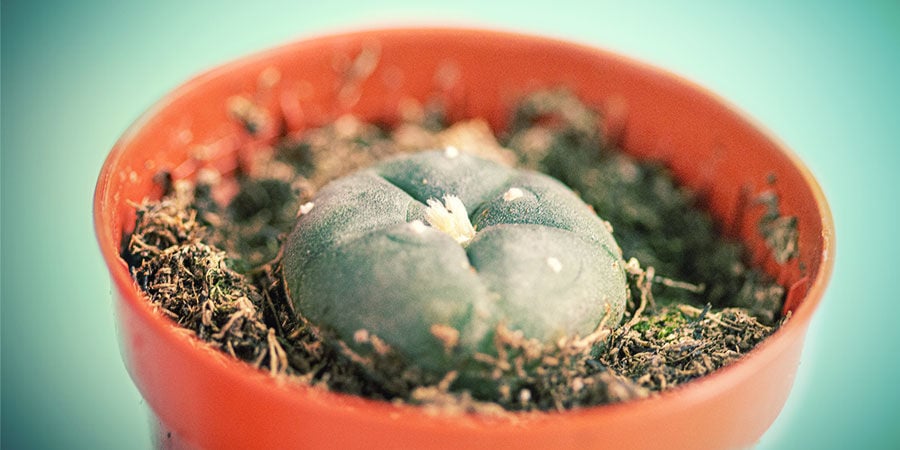
Not everyone can venture deep into the Andes in search of hallucinogenic cacti. Plus, threatened species such as peyote should be left to recover from overharvesting. Luckily, you don’t need to set out on the adventure of a lifetime to experience mescaline. As the cacti will be send straight to your door. We recommend researching the legal status of mescaline in your country before placing an order.
Before you buy, you’ll need to consider which cactus you like and what effects your prefer. Check out the Zamnesia shop for excellent cactus specimens across multiple species.
HOW TO GROW MESCALINE CACTI
You can enjoy the mescaline experience immediately by purchasing a mature cactus. However, growing your own is highly satisfying and adds something special to the experience. You can cultivate your own cactus from seed, or clone one using a cutting.
To grow a cactus from seed, you’ll need some well-draining potting soil topped with sand. Place your seeds in a propagator and keep them moist. It won’t take long for your seeds to germinate. Once they emerge, place them in separate pots on a well-lit window sill and water only when completely dry.
Growing a cactus from a cutting is equally as easy. Take your cutting and insert the dry base around 5cm deep into a completely dry cactus soil mix. Place the cutting in a dry spot out of direct sunlight. Your cactus will begin to root over the next 3–4 weeks. Once your baby has rooted, place it in direct sunlight and apply a small weekly feed of water mixed with nutrient solution.







 United States
United States

